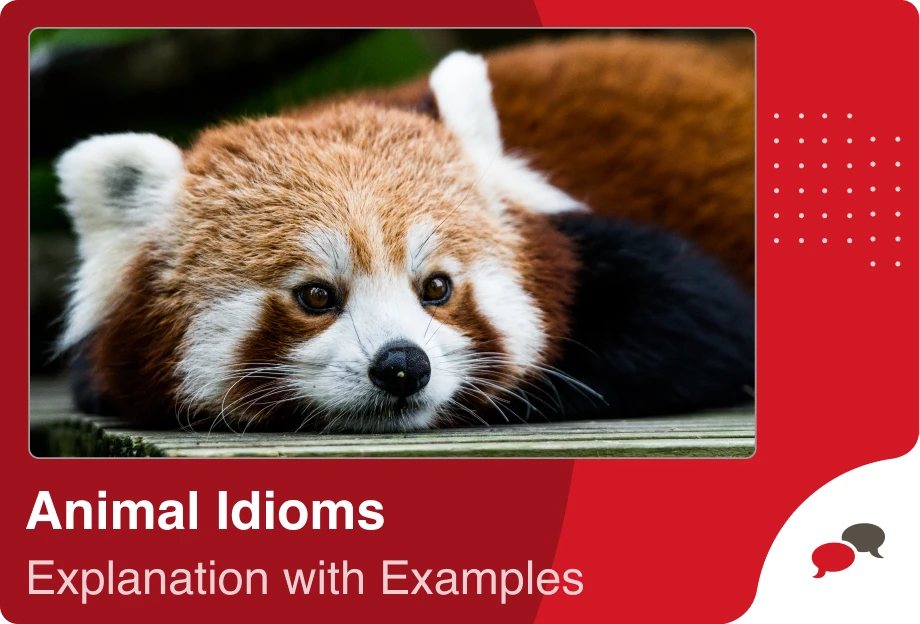In today’s interconnected world, the ability to speak more than one language is becoming increasingly valuable. Parents and educators alike are often curious about the best time and methods to introduce a second language to children. Research suggests that early childhood is an ideal period for language acquisition, as young minds are highly receptive to learning new sounds and structures. However, the question remains: when exactly should children start learning a second language, and what are the most effective strategies to ensure their success? We’ve prepared for you the insights to help parents and educators nurture bilingualism from an early age.
When Should Foreign Language Education Begin for Children?
Foreign language education for children is a topic of much debate and research, with various differing perspectives on the optimal age to start learning. Here are some key points to consider:
Early Childhood (Ages 2-7)
-Critical Period Hypothesis: Research suggests that there is a critical period for language acquisition, typically before the age of seven, during which children can learn languages more naturally and with greater ease.
-Cognitive Benefits: Early exposure to a second language can enhance cognitive abilities, such as problem-solving skills, creativity, and multitasking.
-Pronunciation and Accent: Young children are more likely to achieve native-like pronunciation and accent compared to older learners.
Elementary School (Ages 7-12)
-Structured Learning: Formal language education often begins in elementary school, where children can benefit from a structured curriculum and experienced teachers.
-Cognitive Development: At this age, children can grasp more complex language structures and vocabulary, and they can start to understand grammar rules.
-Social Integration: Learning a foreign language at school can help children develop social skills and cultural awareness by interacting with peers who speak different languages.
Adolescence (Ages 13-18)
-Motivation and Interest: Teenagers may have a stronger peculiar motivation to learn a foreign language, often driven by personal interests, academic goals, or future career prospects.
-Analytical Skills: Older children and teenagers have more developed analytical skills, which can aid in understanding and applying grammatical rules and language structures.
-Cognitive Load: Although it can be more challenging to achieve native-like fluency, teenagers can still obtain a high level of proficiency, especially with immersive and intensive language programs.
Recommendations
-Start Early if Possible: Introducing a foreign language during early childhood can provide a strong foundation and improve the likelihood of achieving fluency.
-Consistency is Key: Regardless of when language education begins, consistent exposure and practice are crucial for language retention and development.
-Use a Multisensory Approach: Incorporate listening, speaking, reading, and writing activities to engage different learning styles and reinforce language skills.
-Cultural Exposure: Enhance language learning with cultural experiences, such as music, food, festivals, and interactions with native speakers, to make the process more engaging and meaningful.
-Parental Involvement: Parents can support language learning by creating a positive and encouraging environment, providing resources, and practicing the language at home.
Ultimately, the best time to start foreign language education depends on the individual child’s circumstances, the resources available, and the goals of the language learning program. Starting early has many advantages, but successful language learning can occur at any age with the right approach and support.
Foreign Language Education for Children: How Should It Be?
Effective foreign language education for children should be immersive, engaging, and culturally enriching. By using age-appropriate methods and creating a supportive learning environment, children can develop strong language skills and a deep appreciation for other cultures. Consistent practice, positive reinforcement, and interactive learning are key components in making language education a rewarding and successful experience for children. Here are some key principles and strategies to ensure effective foreign language education for children:
Key Principles
Interactive and Fun Learning:
-Use games, songs, stories, and activities to make learning enjoyable.
-Incorporate multimedia resources like videos, apps, and interactive software to keep children engaged.
Immersive Environment:
-Create an immersive language environment by using the target language as much as possible.
-Encourage everyday conversations and interactions in the foreign language.
Consistency and Regularity:
-Provide consistent exposure to the language through regular practice and reinforcement.
-Integrate the foreign language into daily routines and activities.
Cultural Context:
-Teach the language within the context of its culture to make learning more meaningful.
-Introduce cultural traditions, holidays, food, music, and customs related to the language.
Age-Appropriate Methods:–
-Tailor teaching methods to the child’s age and cognitive development.
-For younger children, focus on listening and speaking skills; for older children, gradually introduce reading and writing.
Strategies for Different Age Groups
Early Childhood (Ages 2-7)
-Play-Based Learning: Use toys, puppets, and games to teach vocabulary and basic phrases.
-Songs and Rhymes: Introduce language through catchy songs and rhymes to enhance memory and pronunciation.
-Picture Books: Read bilingual picture books to build vocabulary and comprehension.
Elementary School (Ages 7-12)
-Interactive Lessons: Conduct lessons that include interactive activities like role-playing, group projects, and language games.
-Storytelling: Use stories to teach new words, phrases, and grammar in context.
-Technology Integration: Utilize educational apps and online resources for interactive learning and practice.
Adolescence (Ages 13-18)
-Project-Based Learning: Engage students in projects that require research and presentation in the foreign language.
-Language Exchange: Set up language exchange programs with native speakers or pen pals.
-Advanced Content: Introduce more complex grammar, literature, and cultural studies.
Tips for Parents and Educators
-Positive Reinforcement: Celebrate successes and progress to keep children motivated.
-Personalized Learning: Adapt teaching methods to fit individual learning styles and interests.
-Collaborative Learning: Encourage group activities and peer learning to build social skills and confidence.
-Use Visual Aids: Employ flashcards, charts, and visual aids to reinforce vocabulary and concepts.
-Set Realistic Goals: Set achievable language learning goals to maintain motivation and track progress.
Creating a Supportive Environment
-Parental Involvement: Encourage parents to practice the language at home and participate in language-related activities.
-Language Clubs: Organize language clubs or after-school programs to provide additional practice opportunities.
-Field Trips and Cultural Experiences: Arrange field trips or cultural events related to the language being learned.
What are the Benefits of Learning a Foreign Language at an Early Age?
The benefits of learning a foreign language at an early age are extensive and multifaceted. From cognitive and academic advantages to social, cultural, and personal growth, early bilingualism provides children with valuable skills and experiences that can positively impact their lives. Encouraging children to learn a foreign language early on sets the foundation for lifelong learning and success. Here are some of the key advantages:
Cognitive Benefits
1. Enhanced Brain Development:
-Early language learning stimulates brain development and enhances cognitive functions.
-Bilingual children often show greater mental flexibility and creativity.
2. Improved Problem-Solving Skills:
-Learning a second language improves critical thinking and problem-solving abilities.
-Children learn to approach problems from different perspectives.
3. Better Memory and Attention:
-Bilingualism has been linked to improved memory, attention span, and multitasking skills.
-Children who learn a second language often perform better on tasks that require focus and recall.
Academic Benefits
1. Higher Academic Achievement:
-Studies show that bilingual children tend to perform better in standardized tests and other academic areas.
-Learning a second language can enhance understanding of the native language, leading to better reading and writing skills.
2. Advanced Literacy Skills:
-Early language learners develop strong literacy skills in both their native and second languages.
-They often show a better understanding of language structures and grammar.
3. Easier Learning of Additional Languages:
-Children who learn a foreign language early are more likely to learn additional languages more easily.
-The foundational language skills and cognitive benefits make subsequent language learning more intuitive.
Social and Cultural Benefits
1. Cultural Awareness and Sensitivity:
-Learning a foreign language exposes children to different cultures, fostering empathy and cultural awareness.
-It encourages respect and appreciation for diversity.
2. Enhanced Communication Skills:
-Bilingual children develop strong communication skills, including listening and speaking.
-They are often more adept at understanding and interpreting non-verbal cues.
3. Broader Social Networks:
-Being bilingual allows children to connect with a wider range of people, building broader social networks.
-It can lead to lifelong friendships and connections across cultures.
Personal and Long-Term Benefits
1. Increased Confidence and Self-Esteem:
-Successfully learning a second language can boost a child’s confidence and self-esteem.
-It gives them a sense of accomplishment and pride in their abilities.
2. Better Career Opportunities:
-Bilingual individuals often have better career prospects and opportunities in the global job market.
-Many employers value the ability to speak multiple languages and the cultural expertise that comes with it.
3. Lifelong Cognitive Health:
-Bilingualism has been linked to delayed onset of dementia and other cognitive decline in old age.
-The cognitive benefits of early language learning can have long-lasting effects on brain health.
Things to Consider When Providing Foreign Language Education
Effective foreign language education requires careful planning, a supportive environment, and a focus on interactive and engaging learning methods. By considering the age and developmental stage of learners, designing a relevant and progressive curriculum, and providing qualified instruction and cultural context, educators can create a successful and enriching language learning experience. Regular assessment, individualized learning, and extracurricular opportunities further enhance the effectiveness of foreign language education. Here are some key considerations:
1. Age and Developmental Stage
-Tailor Methods to Age: Different age groups require different teaching methods. Young children benefit from play-based and immersive learning, while older children and teenagers can handle more structured and analytical approaches.
-Cognitive Abilities: Consider the cognitive development of learners. Younger children may learn through repetition and songs, while older students can understand grammar rules and complex language structures.
2. Curriculum and Content
-Curriculum Design: Develop a well-structured curriculum that aligns with language proficiency goals and national or regional standards.
-Relevant Content: Ensure the content is age-appropriate, culturally relevant, and engaging. Incorporate topics that interest the learners and relate to their daily lives.
-Progressive Difficulty: Start with basic vocabulary and simple sentences, gradually moving to more complex grammar and advanced topics as learners progress.
3. Teaching Methods
-Immersive Techniques: Use immersion to provide maximum exposure to the language. This can include speaking the target language as much as possible during lessons.
-Interactive Activities: Incorporate interactive activities such as games, role-playing, group discussions, and multimedia resources to make learning engaging and fun.
-Use of Technology: Leverage technology, including language learning apps, online resources, and interactive software, to enhance learning experiences.
4. Teacher Qualifications and Training
-Qualified Instructors: Ensure teachers are proficient in the foreign language and have appropriate teaching qualifications and experience.
-Ongoing Professional Development: Provide opportunities for teachers to receive ongoing training and professional development to stay updated with the latest teaching methods and resources.
5. Cultural Context
-Cultural Education: Integrate cultural lessons to provide context for the language. This helps learners understand the cultural nuances and use the language more effectively.
-Cultural Exchange: Organize cultural exchange programs, field trips, or interactions with native speakers to enhance cultural understanding and practical language use.
6. Learning Environment
-Supportive Atmosphere: Create a supportive and encouraging learning environment where students feel comfortable making mistakes and practicing the language.
-Parental Involvement: Encourage parental involvement in the learning process. Provide resources and guidance for parents to support language learning at home.
7. Assessment and Feedback
-Regular Assessments: Implement regular assessments to monitor progress and identify areas needing improvement. Use a variety of assessment methods, including quizzes, oral presentations, and writing assignments.
-Constructive Feedback: Provide constructive feedback to help learners understand their strengths and areas for improvement. Positive reinforcement can boost confidence and motivation.
8. Individualized Learning
-Personalized Approach: Recognize that learners have different strengths, weaknesses, and learning styles. Personalize instruction to meet individual needs.
-Flexible Pacing: Allow learners to progress at their own pace. Some may need more time to grasp certain concepts, while others may advance more quickly.
9. Extracurricular Opportunities
-Language Clubs and Activities: Offer extracurricular activities such as language clubs, cultural events, and language camps to provide additional practice and exposure.
-Real-World Practice: Encourage real-world practice through interactions with native speakers, travel opportunities, or community involvement.
10. Resource Availability
-Access to Materials: Ensure learners have access to high-quality learning materials, including textbooks, audio-visual aids, and online resources.
-Library and Media: Provide a well-stocked library with books, magazines, and multimedia resources in the target language.
How Should Children Start Learning a Second Language?
Starting to learn a second language early can be highly beneficial for children, and the approach should align with their age and developmental stage. For young children (ages 2-7), immersion through daily interactions, play-based learning, and consistent exposure to the language through songs and stories is effective. As children enter elementary school (ages 7-12), structured learning through formal classes, interactive activities, and cultural experiences becomes important. For teenagers (ages 13-18), focusing on advanced language skills, real-world practice, and utilizing technology and media can enhance their learning experience. Regardless of age, maintaining a positive attitude, encouraging consistent practice, and involving parents in the learning process are key to successful language acquisition.
Frequently Asked Questions About When and How Should Children Start Learning a Second Language?
When is the best age to start learning a second language?
The best age to start learning a second language is as early as possible. Young children, especially those under age 7, are in a critical period for language acquisition, making it easier for them to learn pronunciation and achieve fluency. However, language learning can be successful at any age, and older children and teenagers can also benefit greatly from starting a second language.
What are the benefits of learning a second language early?
Learning a second language early can enhance cognitive abilities, improve problem-solving skills, boost memory and attention, and increase academic achievement. It also fosters cultural awareness, better communication skills, and greater confidence. Additionally, bilingual children may have more opportunities in their future careers.
How should parents introduce a second language to young children?
Parents can introduce a second language to young children through immersive techniques such as speaking the language during daily routines, using educational games and apps, and reading bilingual or language-specific picture books. Incorporating songs, stories, and playful activities can make learning enjoyable and effective.
What methods are effective for teaching a second language to school-aged children?
For school-aged children, structured learning through formal classes, interactive activities, and project-based learning are effective methods. Using multimedia resources, engaging in group discussions, and incorporating cultural experiences can further enhance their language skills and motivation.
You can access everything your child needs to learn English on a single platform! With 25-minute live lessons guided by teachers specialized in child education, entertaining and instructive interactive videos designed for child development, vocabulary learning tools, the AI Tutor MiMi, quizzes, and interactive activities, EnglishCentral Kids offers a personalized and quality education plan tailored to your child’s needs at affordable prices. How about registering for EnglishCentral Kids now and starting your child’s English learning journey?











